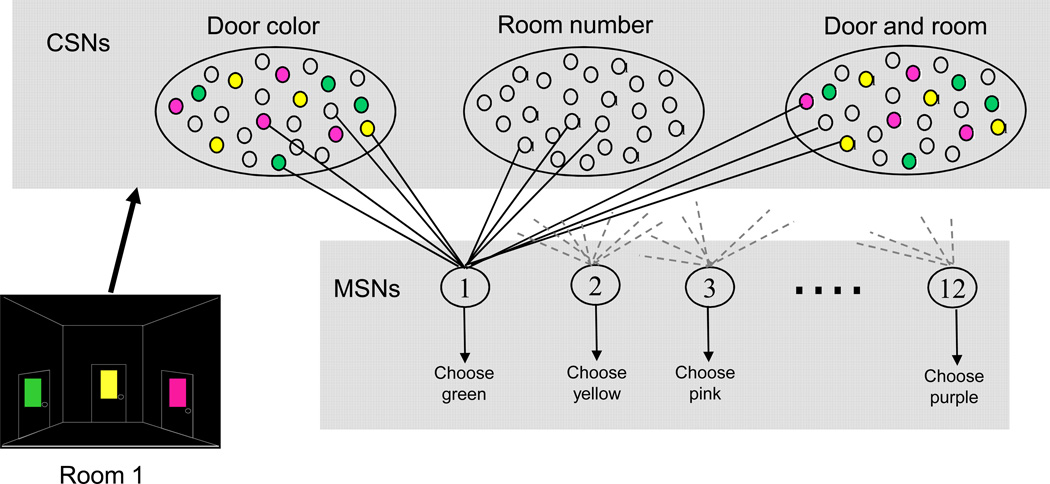Figure 3.
Model neural network. Firing of one of the 12 MSNs represents selecting a particular color. When a subject sees a room there are 3 different colored doors and an indication of which room they are in. Certain model corticostriatal neurons (CSNs) fire due to the 3 colors seen. Each CSN is randomly connected to only 1 of the 12 MSNs. Each MSN also has inputs from CSNs that are activated by colors not present in the current room, so all MSNs have active color inputs no matter what colors are currently present. There are similar connections for CSNs representing the position of the room in the sequence and a configurational representation of both color and room position. Activated CSNs start to fire with a random delay after entering a room at a frequency of 25 (s.d. 2) Hz, with a jitter of s.d. 5ms between each firing event. The randomness in CSN firing introduces noise into the membrane potential of the MSN in the up state.

